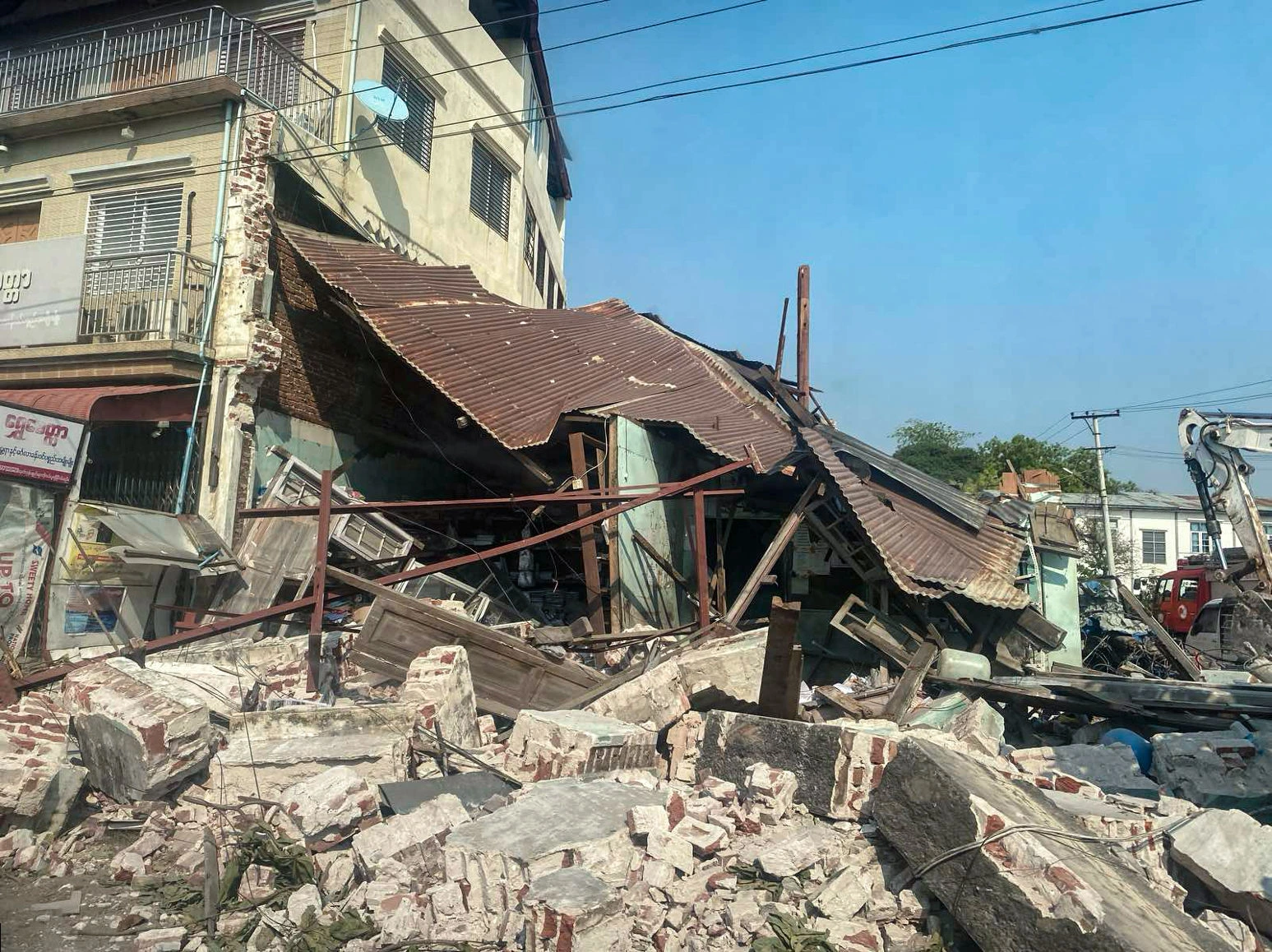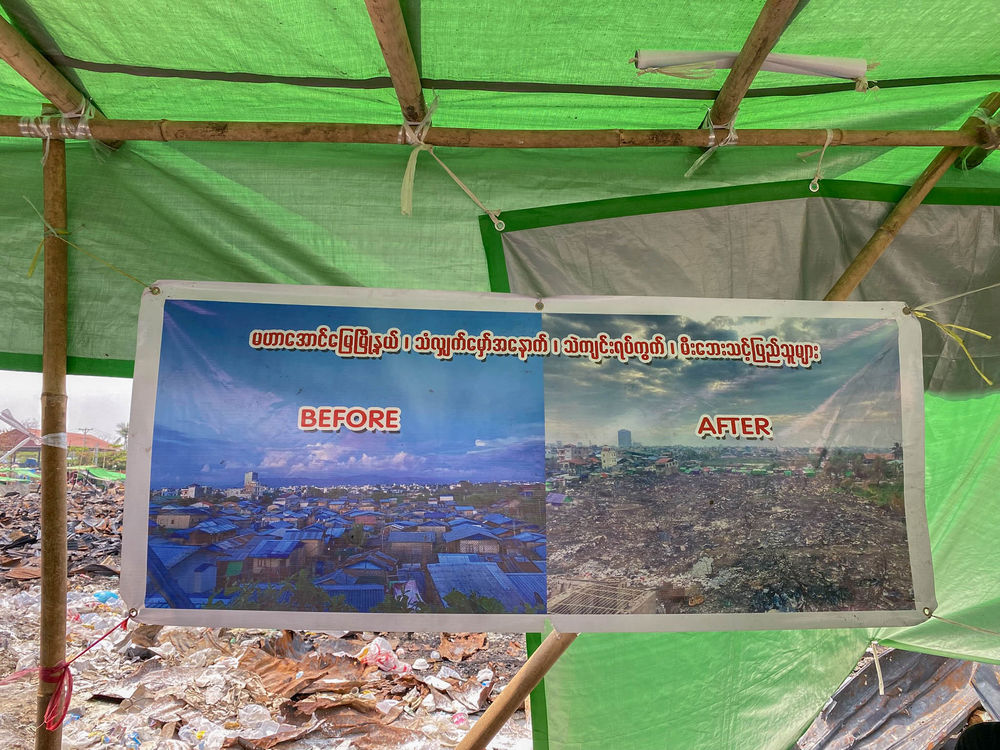As of 27 April, the total number of casualties is 3,769 with 5,106 injured. According to UN, it is estimated that over 17.2 million people are living in affected areas, with over 9.1 million exposed to the strongest tremors. 2 million newly affected people are in urgent need of assistance, adding to the 4.3 million who were already in need before the quake. More than 10,000 buildings have been damaged or collapsed, and more than 193 healthcare centres have been damaged or destroyed.
Transport infrastructure was severely affected, especially the Yangon–Mandalay Highways. Road access to Sagaing from Mandalay was reduced as one bridge collapsed. Electricity, water, and telecommunications remain disrupted in the hardest-hit areas, hampering relief efforts.
- WASH: Safe drinking water is needed, with domestic sanitation systems severely damaged, raising concerns over disease outbreaks.
- Housing: context appropriate housing is urgently needed as the situation of displaced people in makeshift accommodation will most likely worsen in the approaching monsoon and cyclone season.
- Health: Medical facilities have been damaged, and power shortages affect hospitals. Waterborne diseases pose an increasing risk.
- Goods: Myanmar has enough and very well-trained medical personnel but is short on supply.
- Mental health: Child protection concerns include family separation, security of women and girls in makeshift camps, psychosocial distress and gender-based violence.
- Activities in Southern Shan, Inle Lake:
-
- Our mobile clinics cover 4 different villages, with referrals to higher level care.
- Health Promotion and health education notably on good hygiene practices and diseases prevention.
- Community Mental Health: Psychological first aid
- WASH: reparation of water treatment and power supply; reparation of community latrines and bore holes.
- distribution of shelter items such as bamboo, wood, nails, hammers, as well as hygiene NFIs kits
- IPC trainings for 3 referral hospitals.
- Our mobile clinics cover 4 different villages, with referrals to higher level care.
- Mandalay City/Mandalay region:
Given the presence of many other actors MSF concentrated on supporting other hospitals in townships that were not served and yet had significant needs. The main gaps where MSF has been supporting are:
-
- NFI kit distributions to over 2000 families so far in Mandalay city, Mandalay region.
- Restoring water access and sanitation and electricity to health facilities damaged by the earthquake, for displaced people and rural communities including drilling of borewells.
- Temporary mobile clinics to improve access to healthcare for affected people in more than 8 locations in Mandalay city and region.
- Scaling up mental health care also at the community level: Training of over 200 volunteers on Psychological First Aid (PFA) completed and teams are now delivering PFA to affected communities and counseling as well as group sessions for children.
- Helping in resumption of services in damaged health facilities, including Tuberculosis services.
- Surveillance for outbreak response (preventable diseases, cholera, dengue, malaria)
- NFI kit distributions to over 2000 families so far in Mandalay city, Mandalay region.
- Sagaing city
-
- Mobile clinics provide basic health care in two locations in Sagaing city including services for patients with non-communicable diseases.
- Mental health: psychological first aid, group sessions for children and individual counselling for adults.
- Mobile clinics provide basic health care in two locations in Sagaing city including services for patients with non-communicable diseases.
Myanmar faces a series of pre-existing challenges with supplies, notably when it comes to conflict-affected hard to reach locations. As the response now enters the early recovery phase and people start rebuilding their homes, there are also other difficulties for reconstruction efforts such as the growing prices and availability of construction materials like wood, bamboo, cement.



